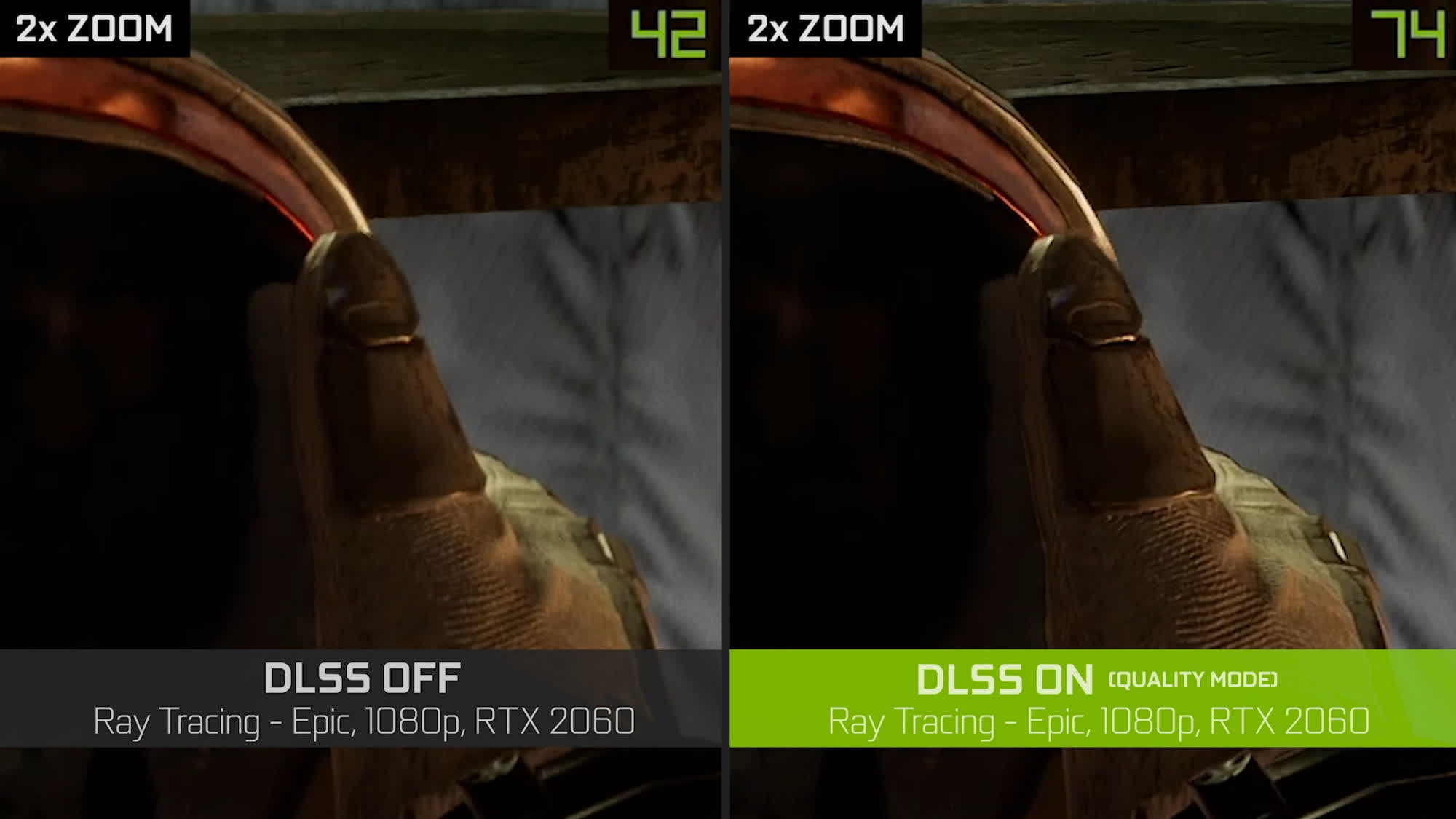In a nutshell: Deep Learning Super Sampling (DLSS) technology popularized the use of neural networks to upscale and enhance real-time 3D graphics, delivering significant improvements in both performance and quality. Competing technologies from AMD (FSR) and Intel (XeSS) have also embraced a similar approach to graphics rendering. However, Nvidia appears to be working on a revolutionary integration of AI algorithms into its RTX-exclusive technology.
Cyberpunk 2077 2.0 recently introduced DLSS 3.5 as the latest iteration of Nvidia's technology, aimed at enhancing performance while maintaining high graphics quality in graphically demanding games. DLSS 3.5 incorporates ray reconstruction using a single AI denoising model and is exclusively available on RTX 40-series GPUs, similar to the previously introduced DLSS 3.0 in September 2022.
Since its initial release in 2019, DLSS has undergone gradual updates, integrating new AI-based upscaling techniques. According to Nvidia's Bryan Catanzaro, the technology will continue to evolve with each new release for the foreseeable future. In a few years, DLSS is expected to become sophisticated enough to handle the entire rendering of a video game world through its neural network-based algorithms.
Catanzaro participated in a recent roundtable focused on DLSS 3.5 and the Cyberpunk 2077 expansion, Phantom Liberty, organized by Digital Foundry. During the discussion, Catanzaro hinted at the potential capabilities of a hypothetical "DLSS 10," suggesting that future iterations of the technology would likely achieve remarkable advancements in real-time graphics.
Nvidia's representative reminded the Digital Foundry panel that the company had already demonstrated real-time rendering of a 3D world using a neural network back in 2018 at that year's NeurIPS conference. In the demonstration, Unreal Engine 4 provided data about the 3D scene and objects to render, while Nvidia's neural network algorithm handled the on-screen graphics rendering.
Catanzaro noted that the final results were relatively basic and certainly "not anything close to Cyberpunk 2077." However, the landscape for generative AI has changed significantly since then. Neural networks have made significant advancements, although AI algorithms remain somewhat unpredictable and prone to generating hallucinations.
Looking ahead, Catanzaro suggested that in a few years, DLSS would evolve into a "completely neural rendering system." Such a system has the potential to revolutionize the traditional rendering approach that relies on raster graphics. Between now and the development of DLSS 10, Nvidia's VP stated that the GeForce-exclusive technology would continue to undergo gradual improvements.
The ultimate goal of DLSS, as Catanzaro explained, is to empower developers to create games that are "more immersive and more beautiful" than what we can currently imagine.
